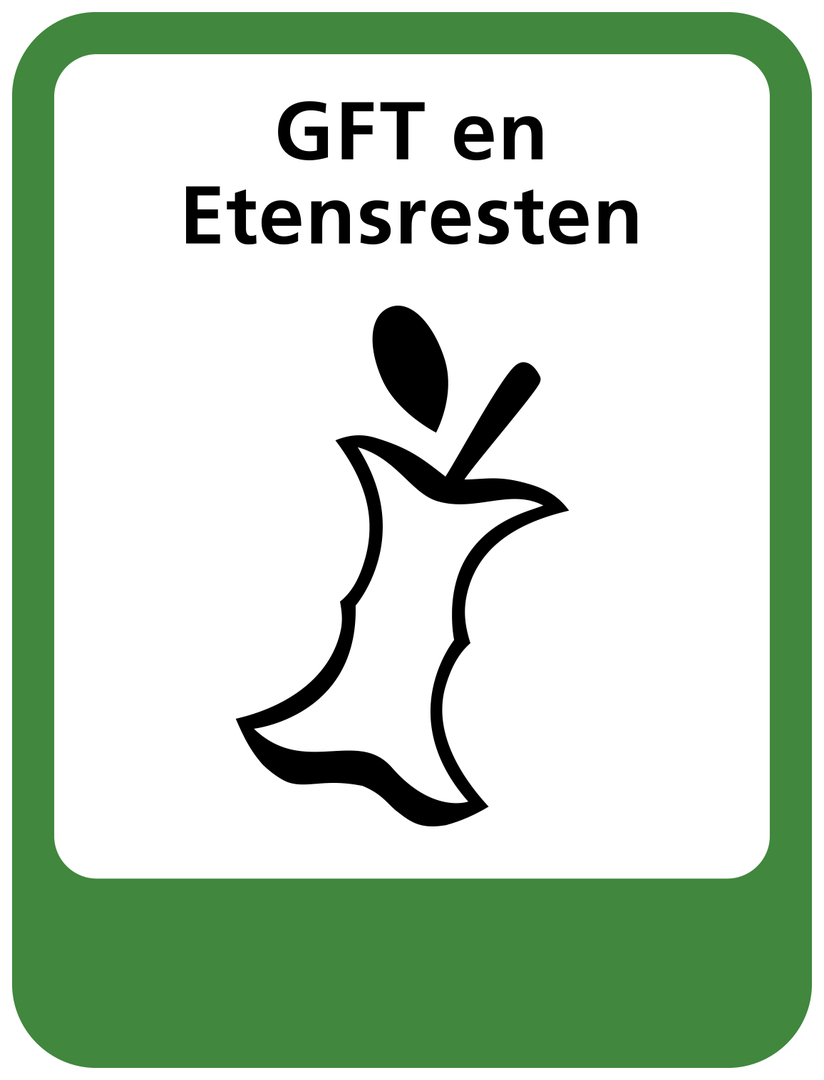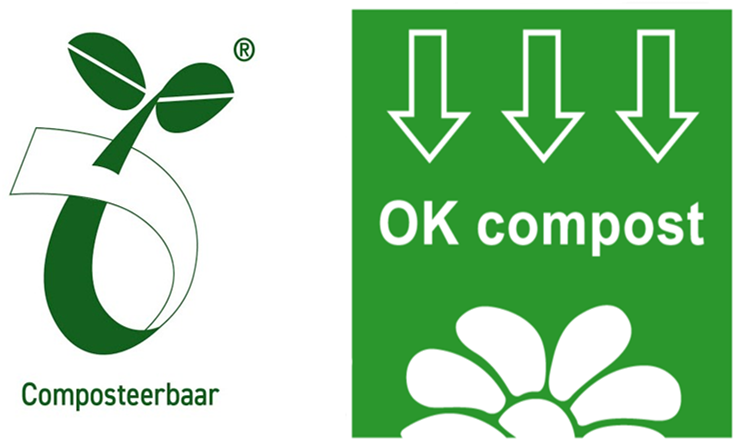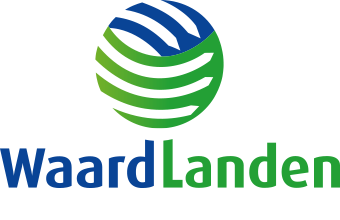Vegetable, fruit, garden and food waste (GFT) is, for example, peelings and bones (food waste), pruning waste and spent flowers. Much of our waste is VGF waste. VGF waste is excellent for recycling.
You can offer GFT in a container or at any of the environmental centres.
> View your personal waste calendar.
What belongs where?
For convenience, we list the separation rules, categorised by: kitchen waste, fine garden waste, animals and waste separation tools.
With the organic waste
Kitchen waste
- vegetable, fruit and peelings
- tea bags and coffee pads
- potatoes, potato peels, bread, rice, dough, pasta
- leftovers, cooked or uncooked, leftovers
- columnar products such as cheese
- egg, fish and meat scraps, including bones and bones
- gravy and cooking fat (congealed)
- nut shells, (mussel) shells and eggshells
- loose tea and coffee grounds (paper filter may also be added)
- biscuits, sweets, chocolate, nuts, seeds, snacks
Fine garden waste
- flowers and plants
- small/fine pruning waste, foliage, cut grass and leaves
- garden and potting soil (small quantities)
- branches, stumps, trunks
Animals
- litter (hay, straw, sawdust) used for small rodents (such as guinea pig, rabbit, hamster) with their poo
- (leftover) animal feed
Tools for waste separation
- special compostable GFT collection bags
- use unbleached and unprinted kitchen paper to wipe up organic waste (sauce, grease, food scraps)

Not in organic waste
Kitchen waste
- packaging of any material
- plastic bags or sacks
- beverage packaging of dairy and fruit juices
- cheese crust
- coffee cups
- frying fat and oil
- chewing gum
Garden waste
- flower and plant pots, pottery
- stone, pebbles, gravel, sand, earth, clay
- fertiliser, pesticides, root canvas, hydro pellets
- beams, lumber, metal
Animals
- poop and dung from large animals, such as dog, cat, horse and cow
- cat litter and bird cage sand
- hair, frizz
- dead animals or offal
Tools for waste separation
- plastic bags
- empty collection bags
- textile bags
- storage trays
- metals, such as iron, tin, aluminium
- glass
- large pieces or quantities of paper, cardboard
- products and packaging made of plastic, including bioplastic or compostable plastic
- (disposable) products and packaging made of natural materials, such as plant pots, trays, plates, cutlery and straws made of bamboo, coconut, palm leaf, maize, (sugar) cane or straw
- textile
- cork
- ash and charcoal from smoke, hearth, stove and barbecue
- tobacco, cigarettes, cigars, butts, filters
- nappies, tampons, sanitary towels, incontinence materials
- dressings, plasters, medicines
- dust bags and their contents
- (fruit) stickers
- coffee mugs of any material
To the environmental street
- brick
- wood
- potting soil, garden soil, sand and earth
- prunings larger than 50 cm
- branches longer than 50 cm
Bioplastic should not be added to kitchen and garden waste
 Plastic does not belong with the kitchen and garden waste. It contaminates the compost and should therefore be removed from the VGF waste before the composting process. Also, bags made of bioplastic do not belong in the kitchen and garden waste container, as they take too long to break down and compost. Bioplastic is plastic made from vegetable waste instead of petroleum or gas. Only special, compostable VGF bags with the Kiemplant logo or OK-Compost logo are allowed with VGF waste, as they are a convenient tool for separating VGF waste. These are available at various shops and supermarkets.
Plastic does not belong with the kitchen and garden waste. It contaminates the compost and should therefore be removed from the VGF waste before the composting process. Also, bags made of bioplastic do not belong in the kitchen and garden waste container, as they take too long to break down and compost. Bioplastic is plastic made from vegetable waste instead of petroleum or gas. Only special, compostable VGF bags with the Kiemplant logo or OK-Compost logo are allowed with VGF waste, as they are a convenient tool for separating VGF waste. These are available at various shops and supermarkets.
Want to know more? Then go to the website of Milieu Centraal.
Tips for a fresh GFT container
This will prevent your GFT container from stinking or having maggots (fly larvae) in it.
- Put the container in a cool place out of the sun.
- Do not throw damp waste into the container.
- Let cut grass dry for a day and drain damp food residues first.
- Pack quickly decaying and smelly food leftovers such as meat and fish in a newspaper.
- Clean the container regularly with water and possibly green soap. Do not use chlorine as this is harmful to the environment.
- Put an old newspaper or a layer of dry GFT waste at the bottom. You can also use special compostable or paper GFT bags. You can buy these in the supermarket. This makes emptying the container easier.
- Make sure the GFT container is empty (and clean) when you go on holiday. This is immediately a good time to air the container.
Tips for your GFT container when it freezes
In case of frost, the GFT waste may freeze in your container. As a result, it cannot be emptied. We would like to give you tips to help prevent this.
- Place your container in the lee of your home.
- Put your container in a frost-free place during the frost period, such as in a storage room or garage.
- Put newspaper at the bottom of the container or use a special compostable paper GFT bag. You can buy these in the supermarket. This makes emptying the container easier.
- Do not use salt to prevent freezing. Salt contaminates the GFT waste.
Reuse: compost and green gas
If you keep GFT separated from residual waste, it is recycled into things like compost and biogas (green gas). Compost is a soil improver in the garden or on the land. Green gas is an alternative to natural gas. VGF put in the residual waste is burnt with the residual waste and not recycled, this VGF is lost forever.






